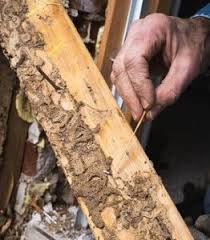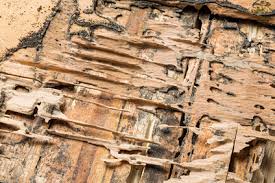The 10-Minute Rule for Termite Control Services In Adelaide
This page describes the three kinds of subterranean termite, drywood and dampwood, and also also the termite species that are found in infestations around Australia.
Termites are categorized into three categories depending on their nesting and feeding habits: dampwood, drywood and subterranean.
Subterranean termites are the most frequent type of termite that are among the most destructive pests worldwide and infests wood. Outdoors wood that is dead is mainly infested by them in contact with the dirt, such as stumps, trees and fallen branches. They prefer although they can digest sound wood, wood that has some degree of rot which makes it easier for them to digest it. .
How Termite Control Services In Adelaide can Save You Time, Stress, and Money.
Subterranean termites need to be near a source of moisture to survive, where they can easily obtain moisture in the soil making their nests in or near the earth. They tunnel to get timber or soil and they tunnel into the ground to reach moisture. .
Dirt is used by the termites for a material to build shelter tubes and nests, which can be composed of wood, dirt, faeces and saliva. Some species build carton nests above ground and construct shield tubes (also called mud tubes) to connect the nest to the ground.
Foraging is determined by the weather, with activity in summer and activity in conditions or winter after rainfall. In regions they can forage with peaks during warmer weather conditions.
How Termite Control Services In Adelaide can Save You Time, Stress, and Money.
Drywood termites live inside parts of timber, wholly in colonies, generally less than 1000 people. There might be several colonies like a piece of furniture inside a single piece of timber or item. They can feed across rings so that the galleries do not follow the grain of timber as is typical subterranean termites, however they tend to steer clear of heartwood.

Colonies may grow for years undetected until the wood breaks or even the swarm. Until the population reaches a critical point, the alates, which would be the casts that leave the nest, best site might not be made for decades in a brand new colony. They leave the nest find a website in order to mate and start a new colony, usually not and to pair up. .
Dampwood termites infest decayed timber that remains moist because of contact with the soil or, as an example, through a water leak in a building. They are most likely to infest timber that's outside, like a tree, stump or logs in contact.

The Termite Control Review Statements
Dampwood termites live inside the timber they feed and make galleries that are open. As with drywood termites, they may infest timber for many years until they are discovered, which is most likely when the alates swarm from a colony. Swarming may happen over several months, with various species swarming at times.
They are an indication of a moisture issue, if they are found at a building. By removing the supply of moisture they are minor pests and may be controlled in structures. In trees that are live they have a tendency to feed on rotting and dead wood.
Termite species can be difficult to identify, even to the specialists. Identification is usually based on the soldiers, that's the termite caste which has the most readily distinguishable features.
Of the species it is the Coptotermes species which are public enemy number 1 in Australia.
Top Guidelines Of Termite Control Specialists
The soldier's head is and yellowish with darker thin mandibles. Body is up to 7 mm long. It's easily confused with two other native Coptotermes species, including C. frenchi and C. lacteus (Victoria Museum)
The soldiers produce a white sticky liquid out of an opening (fontanelle) on front of head when defending the nest from assault.
Coptotermes species do not build mounds, but in Queensland and other areas of Australia. They stumps, nests in trees, sticks, buried timber around houses under buildings and in walls. Trees for nesting are peppercorns , various eucalypts and oaks. The colony is mostly located at the root crown or the lower my explanation portion of the trunk.
The Of Termite Control Specialists
Coptotermes acinaciformis is the termite species in Australia although Mastotermes darwiniensis is the destructive locally across its range in northern Australia. C. acinaciformis strikes all lumber structures and damages forest and ornamental trees as well as fruit trees.